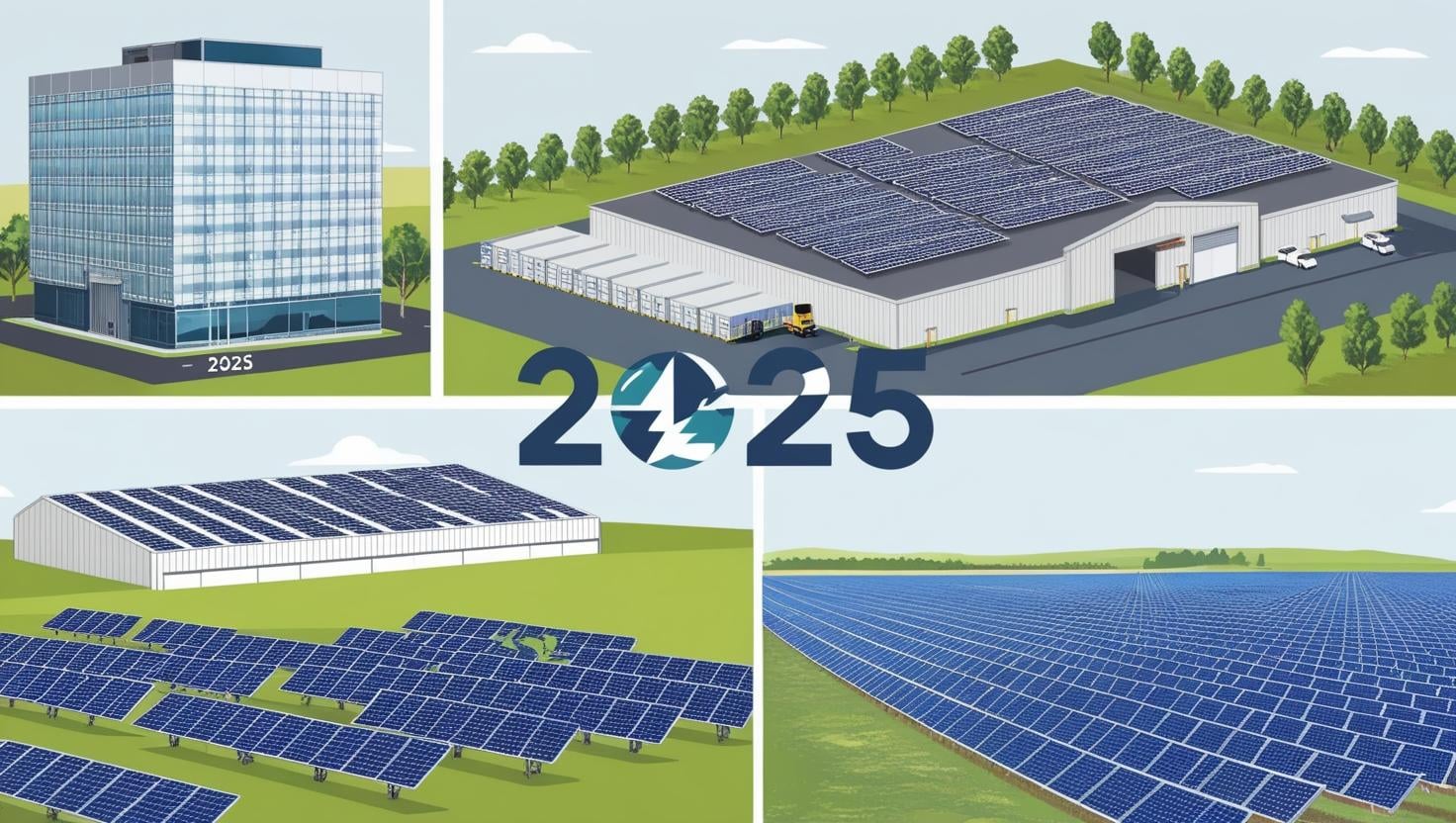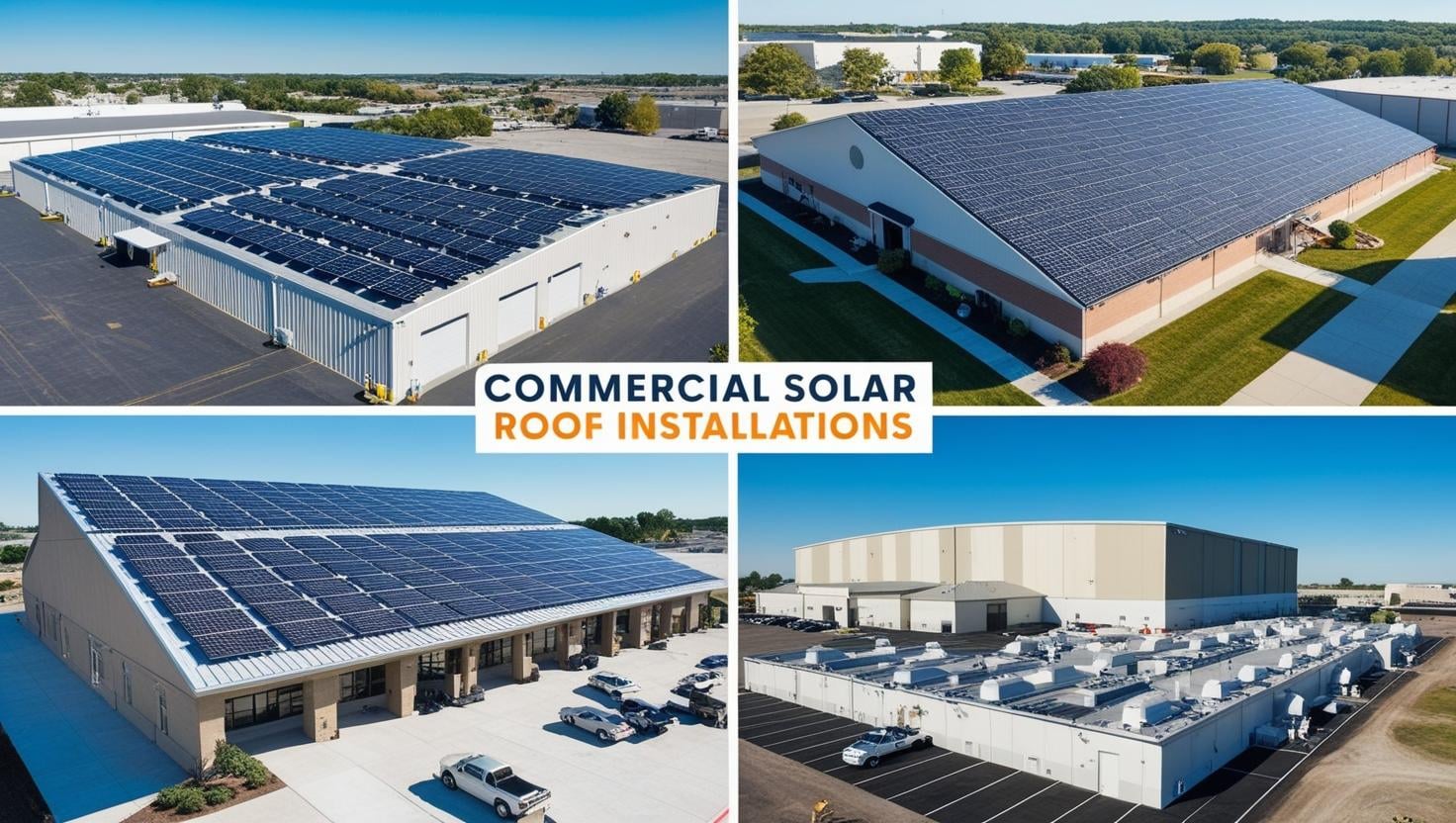Solar energy continues to be a popular topic. This is not a surprise, as people seek alternative forms of energy in an effort to enhance decarbonization efforts, invest in an eco-friendly future, and implement more resilient systems for reliable power in the wake of increasing climate threats.
With this additional popularity, there is an additional abundance of questions that consumers have about solar energy and all the factors that need to be considered with it.
One such question is, “Is solar power a renewable or nonrenewable resource?”
Key Takeaways
- Solar energy, derived from the sun’s rays, is a renewable energy source harnessed through solar photovoltaic (PV) systems and solar thermal systems, offering a sustainable alternative to fossil fuels.
- Solar panels and thermal systems provide numerous environmental benefits, including reducing carbon emissions and dependence on nonrenewable energy sources, thereby mitigating climate change and improving air quality.
- Despite the initial carbon footprint from manufacturing, the long-term benefits of solar panels, such as clean energy production and financial savings from net metering, make them an eco-friendly and cost-effective energy solution.
Understanding Solar Energy

Solar energy, a key player in the realm of renewable energy, stems from the sun’s rays. It can be harnessed in two primary ways: through solar photovoltaic (PV) systems and solar thermal systems. The idea that the sunlight striking the Earth’s surface in just one and a half hours can meet the entire world’s energy consumption for a year is nothing short of astounding. This highlights the immense potential of solar energy as a clean energy source.
Solar power’s versatility allows its use on diverse scales, ranging from petite PV cell panels on residential rooftops to expansive solar farms powering entire communities. Alongside wind power, these systems not only help in generating electricity but also play a significant role in reducing our dependence on non-renewable resources like coal and oil.
Solar Photovoltaic (PV) Systems
Solar photovoltaic (PV) systems are at the heart of solar energy technology. These systems convert sunlight directly into electricity using solar cells embedded in panels.
The process begins when photovoltaic cells in solar panels absorb sunlight, creating electrical charges that move in response to an internal electrical field. This movement generates an electric current, which can then be used to power homes and businesses.
The strength of PV systems stems from their ability to absorb both direct and diffused sunlight, ensuring their effectiveness even on cloudy days. By installing solar panels, we can harness photovoltaic energy to produce power sustainably and reduce our reliance on the electrical grid.
Solar Thermal Systems

Unlike PV systems, solar thermal systems use mirrors to concentrate sunlight onto receivers that collect solar energy and convert it to heat.
This thermal energy can then be used for various applications, including residential heating, industrial processes, and electricity generation. Solar thermal systems are particularly effective for large-scale solar farms that need to store energy for use when the sun isn’t shining.
One of the notable benefits of solar thermal systems is their heat energy storage capacity for later use, establishing them as a dependable part of a comprehensive solar energy system. This capability ensures a continuous supply of energy and enhances the overall efficiency of solar power work.
Renewable vs. Nonrenewable Energy Sources
Energy sources can be broadly classified into renewable and nonrenewable categories. Renewable energy stems from natural sources or processes that replenish continuously. These include sunlight and wind energy. These sources are sustainable and environmentally friendly, making them ideal for long-term energy solutions.
Examples of renewable energy sources include solar, wind, biomass, hydroelectric, and geothermal energy.
On the other hand, nonrenewable energy sources stem from finite resources that will exhaust over time. These include fossil fuels like coal, oil, and natural gas, which are known to cause significant environmental harm through activities like strip-mining, fracking, and air pollution. The finite nature and environmental impact of nonrenewable energy make it less desirable for sustainable development.
Characteristics of renewable energy
Renewable energy sources are characterized by their ability to be replenished naturally and continuously. They originate from natural resources and processes that are constantly renewed, such as the sun, wind, and water. This inexhaustible nature makes renewable energy highly reliable and sustainable, ensuring a steady supply of clean energy without the risk of depletion. Among these, one renewable energy source can be chosen based on the specific needs and location.
Characteristics of nonrenewable energy
Nonrenewable energy sources, on the other hand, are finite and will eventually be exhausted. These sources include coal, oil, and natural gas, which are limited in availability and cannot be replenished once used.
The extraction and use of nonrenewable energy often result in significant environmental degradation, making them a less sustainable choice for long-term energy needs.
Why Solar Energy is Renewable

The classification of solar energy as renewable is due to its source – the sun, which offers an uninterrupted and virtually endless supply of energy.
The sun is a natural and abundant resource that will not deplete over time, making solar energy a sustainable and reliable energy source. This perpetual availability underscores why solar energy is categorized as solar energy renewable.
Harnessing solar energy involves converting sunlight into usable forms of energy through various technologies, such as solar panels and solar thermal systems. These systems leverage the sun’s light to generate electricity and produce power, making solar energy a cornerstone of renewable energy sources.
Solar energy and the sun’s light
The sun emits vast amounts of energy daily, ensuring an ongoing and abundant source of solar power. The sheer volume of sunlight that hits the Earth’s surface in just one and a half hours is enough to meet global energy needs for a full year.
This highlights the immense potential of solar energy to fulfill our energy requirements sustainably.
Environmental benefits
Using solar energy offers several environmental benefits, including:
- Reducing the need to burn fossil fuels
- Lowering carbon emissions
- Mitigating climate change
- Generating clean power from the sun without creating greenhouse gases or local air pollution
- Significantly improving air quality.
The environmental benefits of solar energy make it a crucial player in the fight against global warming and in promoting a cleaner, healthier planet.
The Manufacturing Process of Solar Panels

Solar panel manufacturing comprises numerous energy-intensive procedures, such as wafer production, cell fabrication, and module assembly. These steps contribute to the overall carbon footprint of manufacturing solar panels.
For instance, the energy mix used during manufacturing significantly impacts the resulting carbon emissions. Despite the initial environmental costs, the long-term benefits of solar panels in terms of clean energy generation far outweigh these impacts.
Moreover, the production of polysilicon, a primary raw material in solar cells, accounts for a significant portion of the carbon emissions in solar panel manufacturing. However, advancements in technology are continuously reducing the environmental footprint of these processes, making solar panels an increasingly eco-friendly option.
Carbon footprint during manufacturing
Producing solar panels does emit carbon dioxide, primarily due to the energy-intensive processes involved in manufacturing. Key contributors to the carbon footprint include wafer production, cell fabrication, and module assembly. Studies estimate that the carbon footprint of solar panels ranges between 40 to 100 grams of CO2 per kilowatt-hour produced.
While the manufacturing of solar panels does have some carbon footprint, this is offset by their long-term environmental benefits. Once operational, solar panels generate clean energy that significantly reduces greenhouse gas emissions, making them a valuable investment in sustainable energy.
Lifespan and efficiency
Solar panels typically have a performance life of about 25 to 30 years. During this time, they can offset their initial carbon footprint within a few years. Recent advancements in solar panel technology, such as PERC (Passivated Emitter and Rear Cell) and bifacial modules, aim to improve efficiency and reduce environmental impact.
With minimal ongoing maintenance, solar panels remain a durable and reliable clean energy source throughout their lifespan.
Solar Energy Systems and Grid Integration
Solar energy systems harmoniously blend with the electrical grid, offering power during peak demand and enabling homeowners to sell surplus electricity back to the grid. Inverters play a crucial role in this integration by converting the direct current (DC) electricity generated by solar panels to alternating current (AC) electricity used by the grid. Advanced inverters can even help stabilize the grid by responding to changes in voltage or frequency.
Solar energy systems paired with battery storage can provide electrical energy even during grid outages, ensuring a continuous supply of electricity. This capability enhances the reliability of solar power and supports its integration into the broader energy infrastructure.
Home solar installations
Home solar installations offer numerous benefits, including cost savings on utility bills and increased property value. Homes with rooftop solar panels are usually still connected to the electric grid, supplying power when solar energy is insufficient. However, grid-tied systems shut down automatically during outages for safety reasons.
Microinverters, placed on each panel, prevent shading or damage to one panel from affecting the entire system’s power output, enhancing overall efficiency. Additionally, battery storage can be connected to solar panels to provide energy at night, further maximizing the benefits of home solar installations.
Net metering explained
Net metering allows homeowners to sell excess electricity back to the grid, providing additional financial benefits. This process credits homeowners for the excess electricity they produce, which can be used to reduce their electricity bills.
By offsetting energy costs, net metering makes solar energy systems even more cost-effective and appealing to homeowners.
Impact of Solar Energy on Global Warming

Solar energy notably cuts down greenhouse gas emissions by producing electricity without the combustion of fossil fuels, which emit greenhouse gases. This shift from fossil fuel-based power to renewable solar energy plays a crucial role in mitigating global warming. By harnessing the sun’s light to produce power, solar energy helps decrease our carbon footprint and combat climate change.
The widespread adoption of solar energy can lead to long-term positive impacts on the global climate. By reducing reliance on fossil fuels, solar energy contributes to fewer severe weather events and ecosystem changes linked to climate change. This transition to clean energy sources is essential for protecting our environment and ensuring a sustainable future.
Reducing carbon emissions
Solar power produces electricity with zero carbon emissions, significantly reducing greenhouse gas emissions, including carbon dioxide. Shifting to solar power reduces reliance on fossil fuels, thereby lowering the overall carbon footprint associated with electricity production.
Over 25 years, a 100kW solar PV system can avoid the emission of 3,227 metric tons of CO2, highlighting the long-term benefits of solar energy in reducing carbon emissions.
Long-term environmental impact
Widespread adoption of solar energy can lead to significant positive impacts on the global climate by:
- Reducing the reliance on fossil fuels
- Decreasing greenhouse gas emissions
- Mitigating severe weather events
- Preventing ecosystem changes associated with climate change
By decreasing the overall dependence on finite fossil fuel resources, solar energy aids in the fight against global warming over the long term.
Common Myths About Solar Energy
Despite its manifold advantages, solar energy is frequently misinterpreted. Common myths about solar energy can deter people from adopting this clean energy source. For instance, some believe that solar panels do not work efficiently in cloudy or snowy conditions, but in reality, solar panels can still generate electricity even on overcast days. Another myth is that solar panels can damage rooftops; however, properly installed solar panels actually protect roofs from the elements.
Rectifying these misconceptions is vital to grasp the actual potential and advantages of solar energy. By debunking these myths, we can encourage more widespread adoption of solar technologies and move towards a more sustainable energy future.
Myth: Solar panels are not efficient
Contrary to the myth that solar panels are not efficient, modern solar panels have an efficiency rate of around 22%, with some advanced models achieving even higher efficiency. These panels are designed to capture both direct and diffused light, allowing them to generate electricity even on cloudy days.
Innovations in solar technology continue to improve efficiency, making solar panels a reliable source of renewable energy in various climates.
Myth: Solar energy is too expensive
The notion that solar energy is too expensive is outdated. With rising utility rates, solar energy has become a cost-effective investment, offering substantial savings on electricity costs over time. Additionally, various incentives, such as the federal residential solar tax credit, allow taxpayers to claim a 30% tax credit on the cost of solar systems, significantly reducing the upfront costs.
State and local rebates further offset the initial investment, making solar energy more accessible and affordable.
Summary
In conclusion, solar energy stands out as a renewable, sustainable, and environmentally beneficial energy source.
By harnessing the sun’s light, solar panels generate clean electricity, reduce greenhouse gas emissions, and help combat global warming. The manufacturing process, while initially carbon-intensive, is offset by the long-term benefits of solar power.
Debunking common myths about solar energy reveals its true potential, efficiency, and affordability.
As we move towards a greener future, embracing solar energy will play a pivotal role in achieving a sustainable and clean energy landscape.
Frequently Asked Questions
Is solar energy renewable or nonrenewable?
Yes, solar energy is renewable because it comes from the sun, which offers a constant and nearly limitless source of energy.
How do solar photovoltaic (PV) systems work?
Solar photovoltaic (PV) systems work by converting sunlight into electricity using solar cells in panels. The cells absorb sunlight, creating electrical charges that generate an electric current.
What are the environmental benefits of solar energy?
Solar energy offers significant environmental benefits by reducing the need for fossil fuels, lowering carbon emissions, and improving air quality. It generates clean power from the sun without producing greenhouse gases or local air pollution.
Are solar panels efficient in cloudy conditions?
Yes, solar panels can still generate electricity in cloudy conditions because they are designed to capture both direct and diffused light, making them effective even on overcast days.
Is solar energy too expensive to install?
No, solar energy has become more affordable due to various incentives, such as federal and state tax credits and rebates, significantly reducing the upfront costs, making it a cost-effective investment.






